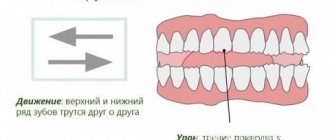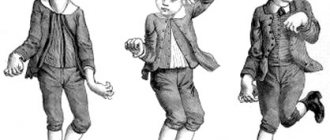Mutism can develop at any age, but is not often diagnosed in older people. This pathological condition can be viewed from different points of view.
In psychology, mutism can be a symptom of socialization problems. But this disorder also occurs during neuroses, during the development of a number of psychiatric diseases. Very often, this condition is a sign of hysteria, an anxiety disorder. In some cases, pathological muteness is one of the signs of catatonic stupor or schizophrenia.
It is worth understanding that reluctance to talk due to whims or resentment is not a violation. This is, rather, a manifestation of character and an attempt to manipulate people around him. Mutism is a serious disorder that requires correction. The condition can arise due to various reasons. Some reasons for mutism begin to develop with age.
Causes of selective mutism in children
Selective mutism develops with a combination of constitutional psychological characteristics and environmental influences. The former are the basis, the latter are the trigger for the formation of the disorder. Etiological factors include:
- Emotional and personal characteristics.
The development of psychogenic muteness is promoted by anxiety, shyness, vulnerability, timidity, impressionability, silence, indifference, suppressed aggression, and a tendency to solitude. - Deviations of mental development.
Selective mutism often occurs with mental retardation and speech development defects. Difficulties in articulation and lack of confidence in mental abilities make the child withdrawn and provoke muteness. - Neurological features, disorders.
Situational muteness is detected in children with a labile type of nervous system, organic brain damage (traumatic brain injury, neuroinfections, hematomas, tumors). - Type of education.
Selective mutism occurs in a child as a result of disharmonious relationships with shy, insecure parents (parents), who have a high level of social anxiety or depressive disorders, and who tend to openly express aggression towards family members. Parenting is based on hyperprotection, total control of the child’s life. - Stress.
The disorder debuts after stressful situations - an accident, death of a loved one, parental divorce, violence, family immigration.
Who is at risk?
For selective mutism to occur, two factors must come together: genetically determined behavioral characteristics and an emotionally aggressive environment.
There are families in which anxiety, excessive shyness, and self-doubt have been present for many generations. A child born in such a family, even with an initially stable nervous system, involuntarily adopts patterns (template, sample, model) of pathological reactions from adults. Such a child is by default afraid of everything new - contacts, impressions, achievements.
If for parents the house seems to be a quiet haven, from which they need to go out into the world only in case of urgent need, if there are rarely guests, and trips to picnics or concerts are an exception, then you should not expect from the child a special desire to communicate with someone neither was it.
A child who communicates with two or three adults at the beginning of life and constantly sits at home perceives isolation as the norm. Any encroachment on this “norm” will cause him anxiety or rejection, rejection of a hostile world.
Another problem is the lack of family love for the child, his internal isolation among his closest relatives. Children from previous marriages and random fathers often suffer precisely because they are not internally accepted by their mother or other relatives. This can happen in a complete family, with a natural father, to whom the child interferes in some way. In this case, selective mutism is incredibly difficult to cure because it is caused by severe problems.
Pathogenesis
The pathogenetic basis of elective mutism in children is passive aggression - a kind of silent protest against social pressure, overprotection, parental control, and a traumatic situation.
The child’s fear, uncertainty, and shyness do not allow him to express aggression in any other way. The lack of means of self-expression prevents the oral expression of desires, problems, and feelings. The desire for loneliness and silence is strengthened by misunderstanding on the part of adults. As a result, the child refuses attempts to establish contact, takes a wait-and-see attitude, and hopes for a natural resolution of problems without his participation.
Diagnostic criteria
Selective mutism is a rare phenomenon, its frequency is within tenths of a percent (up to 0.2%). Girls get sick more often.
In order to make such a diagnosis, the child's disorder must meet certain criteria:
A child can freely communicate at home with family or on the street with friends, but become completely silent when approaching a school, club, section, or an unpleasant adult.
Undoubtedly, such a reaction is alarming. Selective mutism is an opportunity for a child to prevent invasion of his own personality or to isolate himself from situations that are intolerable to him.
Classification
According to the duration of its course, elective mutism in children is divided into transient (passing) and continual (continuous, permanent). The first form is characteristic of a disorder provoked by a traumatic situation. The second is detected in psychologically predisposed children. Also, psychogenic mutism is classified according to the characteristics of its course:
- Symbiotic.
The child has a strong connection with a certain person (mom, dad). Relationships with other members of the social environment are subordinate and manipulative. - Speech phobic.
Psychogenic muteness is complemented by the fear of hearing one’s voice and ritual behavior. - Reactive.
Develops as a complication of depression caused by a traumatic event. - Passive-aggressive.
Silence is used as a psychological weapon to influence others.
Symptoms of selective mutism in children
The main symptom is selective muteness - the absence of verbal interaction in specific situations. The appearance of mutism in educational institutions is typical - at school, kindergarten, boarding school. Dumbness occurs within the walls of a building or is limited to an office or room. The child does not speak in the presence of any people or only teachers, a certain teacher (group of teachers), communicating normally with peers. The child’s level of knowledge is monitored in writing. It is extremely rare for children to not talk at all at home, but they willingly do so in kindergarten, school, or on the street.
Often patients, not being able to establish verbal contact, use facial expressions and pantomimes for social interaction. In severe cases of the disorder, the presence of certain people is so stressful and disturbing for the child that he completely freezes, avoids tactile contact, does not look into the eyes, tries to hide his head and tuck his legs. Behavior becomes unusual: ritual actions are formed that reduce tension (laying out objects, washing hands). School shyness and timidity are replaced by domestic aggression, disobedience, and stubbornness. There is a pathological attachment to the mother and difficulties in separation. Added to selective mutism are delayed speech development, articulation disorders, dysarthria, phobias, tics, depression, enuresis, and encopresis.
Treatment of selective mutism
Treatment of selective mutism depends on the type of pathology and can be carried out by psychiatrists, psychologists, speech therapists, and psychotherapists. Each of these specialists has their own methods of treating pathology. Treatment in any case involves taking into account the cause of the disease.
With drug therapy used by psychotherapists and psychiatrists, in special cases tranquilizers, selective serotonin reuptake inhibitors or sedative neuroleptics are prescribed. Drug therapy is not the mainstay.
Typically, treatment for selective mutism begins with a “multimodal approach,” which involves the use of a wide repertoire of techniques and techniques. The most effective in this case is a combination of family, individual and behavioral therapy.
Treatment by a psychologist is based on behavioral techniques. During classes, children practice their speech skills, and successful attempts are reinforced with rewards. Treatment involves participation in the correction of pathology by teachers, parents, and classmates. Classes begin with the child getting used to his own voice.
For this purpose, their speech is recorded and listened to, paying attention to how beautiful the child’s voice sounds. Gradually, he develops a need for pronunciation and communication. Then new interlocutors are introduced into the “company”. At first, these may be people whom the patient trusts, and then the group expands to include strangers. Usually they are the child's peers. Treatment involves working with one’s own anxiety, which is common to all people.
You may also be interested
Usually they are well developed physically, have excellent hearing, and yet do not speak. Doctors diagnose such children with mutism. But sometimes parents don't know what to think. At home the baby talks, he cannot be stopped, but in kindergarten no one has ever heard a single word from him. And if in the first couple of days everyone hoped that it was simple shyness, then after weeks or even months the problem causes serious concern for parents. And having sought medical advice on this matter, they receive what they consider a strange diagnosis: “selective mutism.”
Selective mutism has nothing to do with normal shyness. Once in an unfamiliar environment, all children feel uncomfortable, but the embarrassment goes away as they get used to the new place. However, if a child has not started speaking for a long time, this is a sign of a speech development disorder.
Complications
Without adequate therapy, long-term selective mutism in children leads to the formation of secondary psychogenic disorders. A critical attitude towards one’s own condition provokes the development of depression (usually apathetic) and distorts personal development - adolescents and adults have pronounced schizoid, inhibited traits. Uncertainty, social fears, and inability to establish contacts lead to isolation and problems of labor socialization. A deficiency of oral speech activity negatively affects intellectual development and verbal and logical thinking. Difficulties arise in mastering the school curriculum and passing entrance exams for vocational educational institutions.
Diagnostics
The diagnosis of selective mutism is established by a psychiatrist based on a clinical examination. Data is collected through a parent interview and child observation. The disorder is confirmed if the following signs are present:
- Understanding spoken speech.
The child is able to comply with requests, commands, and nod his head to express agreement or denial. - Formation of expressive speech.
The patient can express his thoughts orally and has spoken language sufficient for communication. - Use of speech.
There are situations where the child uses oral speech.
An important point is to distinguish selective mutism from other mental disorders and organic brain lesions accompanied by speech disorders. The process of differential diagnosis may require consultation with a neurologist, psychologist, speech therapist, ophthalmologist, otolaryngologist, audiologist, and additional physical and instrumental studies. When diagnosing selective mutism, the following should be excluded:
- Early childhood autism.
Distinctive characteristics of RDA: speech is initially impaired, the independence of symptoms from the situation, disharmony of mental development, stereotypical actions, total emotional and behavioral deviations are determined. - Childhood schizophrenia.
The disease is accompanied by a gradual reduction in speech, productive symptoms of psychosis (delusions, hallucinations, changes in thinking), destruction of everyday skills, and simplification of gaming activities. - Neurological diseases.
These disorders are confirmed by instrumental examinations of the brain. Characterized by gradual loss of speech, rapid exhaustion, fatigue, decreased attention and memory. - Shock states.
Mutism against the background of an affective-shock reaction is characterized by an acute onset immediately after a psychologically traumatic situation, totality, relative short duration of manifestations, severe panic fear, motor retardation, and somatovegetative disorders. - Hysterical muteness.
With selective mutism, the child is indecisive and strives to remain unnoticed. With hysterical muteness, inflated self-esteem, the need for the attention of others, a tendency to fantasize, and attempts to manipulate people are determined.
Symptoms of selective mutism
Statistics on the prevalence of this disease do not exceed 1% of the population, which is most likely due to insufficient attention to the problem and the complexity of diagnosis. The symptoms that distinguish selective mutism from ordinary modesty are:
- Normal functioning of the speech apparatus, the ability to reason sensibly and formulate one’s thoughts.
- Frequent attacks of “numbness” in specific life situations: in class, when communicating with superiors, or maybe in the presence of a certain person.
- Such selective, or as it is also called, elective mutism is not a conscious refusal to talk.
- The manifestation of symptoms is not due to the presence of mental illness, deafness or undeveloped speech.
- Selective silence is observed over a long period - from one month.
Treatment of selective mutism in children
The basis of treatment is psychotherapy aimed at eliminating social phobias, the anxiety-depressive component, and developing communication skills. The following methods are used:
- Cognitive-behavioural.
The work is carried out individually. Fairy tales, drawing, and modeling are used by the psychotherapist to establish contact and help express and experience negative emotions. Using elements of suggestive therapy, the specialist corrects the child’s attitude towards others. Game techniques allow you to practice basic speech communication skills without resistance. - Behavioral.
Group trainings are focused on developing the skills of interpersonal acceptance, communication, cooperation, and verbal interaction. By contacting people of different ages, the child overcomes shyness and embarrassment. Successful actions are supported by praise and attention. - Family counseling.
The psychotherapist tells parents and teachers about the mechanisms of selective mutism and gives recommendations on ways to communicate with the child. The importance of approval and praise is emphasized, and techniques for unobtrusively stimulating extended statements are presented.
Psychotherapy is complemented by speech therapy sessions aimed at correcting dysarthria and articulation disorders. Correct pronunciation reduces the child’s uncertainty and promotes the speedy restoration of verbal communication. Psychopharmacotherapy is indicated for social phobias, anxiety, and depression. Antidepressants (SSRIs), tranquilizers, nootropics are prescribed.
Causes
Mutism is considered a psychopathological pathology, since the ability to speak in patients is preserved, but for certain reasons they cannot say anything, answer a question or make any sound.
A child or adult suffering from mutism really cannot speak up or try to “force” it. This only aggravates the overall stress and worsens the patient's condition.
Mutism can occur due to both physiological and psychological reasons. The most common causes of development are:
- Psychological: stress, severe fear, traumatic situation (selective mutism may occur), severe nervous shock (illness or death of a loved one, car accident, fire, serious illness, etc.)
- Psychopathology is one of the symptoms of autism, schizophrenia, neurosis, depression and some other disorders.
- Neurological: recovery from coma, brain injury, cerebrovascular accident, brain tumors, inflammatory diseases, and so on.
In childhood, determining the cause of mutism is especially difficult. If it arose even before the child developed coherent speech or during the first few years after its establishment (at 2-5 years), the disappearance of speech has an extremely negative impact on the state of intellectual development, causing a general developmental delay.
Such children may be misdiagnosed with mental retardation or autism, and therefore will not receive appropriate treatment, causing their intellectual disability to deepen.
In children over 6 years of age and adults, mutism is established on the basis of an examination, various studies and the patient’s answers to questions - in writing, with gestures or facial expressions.
Literature
- R. Lindsey Bergman.
Treatment for Children with Selective Mutism: An Integrative Behavioral Approach. — OUP USA, 2013. — 137 p. — ISBN 978-0-19-539152-7. (English) - Thomas R. Kratochwill.
Selective Mutism (Psychology Revivals): Implications for Research and Treatment. — Psychology Press, 2020. — 218 p. — ISBN 978-1-317-53271-2. (English) - Johnson M., Wintgens A.
The Selective Mutism Resource Manual. — 2nd Ed. — Taylor & Francis, 2020. — 354 p. — ISBN 978-1-351-70269-0. (English) - Anstendig K.
Selective mutism: A review of the treatment literature by modality from 1980—1996. (English) // Psychotherapy (English) Russian. : journal. - American Psychological Association, 1998. - Vol. 35, no. 3. - P. 381-391. — ISSN 1939-1536. - doi:10.1037/h0087851. - Shriver Mark D., Segool Natasha, Gortmaker Valerie.
Behavior Observations for Linking Assessment to Treatment for Selective Mutism (English) // Education and Treatment of Children: journal. - Johns Hopkins University Press, 2011. - Vol. 34, no. 3. - P. 389-410. — ISSN 1934-8924. - doi:10.1353/etc.2011.0023. - Bergman R.L., Piacentini J., McCracken JT
Prevalence and Description of Selective Mutism in a School-Based Sample // Journal of the American Academy of Child and Adolescent Psychiatry (English) Russian. : journal. - Elsevier BV, 2002. - Vol. 41, no. 8. - P. 938-946. — ISSN 0890-8567. - doi:10.1097/00004583-200208000-00012. - Black B., Uhde TW
Psychiatric Characteristics of Children with Selective Mutism: A Pilot Study (English) // Journal of the American Academy of Child and Adolescent Psychiatry (English) Russian. : journal. - Elsevier BV, 1995. - Vol. 34, no. 7. - P. 847-856. — ISSN 0890-8567. - doi:10.1097/00004583-199507000-00007. - Dummit ES, Klein RG, Tancer NK, Asche B., Martin J., Fairbanks JA
Systematic Assessment of 50 Children With Selective Mutism // Journal of the American Academy of Child and Adolescent Psychiatry (English) Russian. : journal. - Elsevier BV, 1997. - Vol. 36, no. 5. - P. 653-660. — ISSN 0890-8567. - doi:10.1097/00004583-199705000-00016. - Oerbeck B., Johansen J., Lundahl K., Kristensen H.
Selective mutism: A home-and kindergarten-based intervention for children 3-5 years: A pilot study (English) // Clinical Child Psychology and Psychiatry (English). )Russian : journal. - SAGE Publications, 2011. - Vol. 17, no. 3. - P. 370-383. — ISSN 1359-1045. - doi:10.1177/1359104511415174.
Symptoms and types
Manifestations of mutism largely depend on the cause of the pathology. They can vary greatly, but the main symptom is the inability to answer questions or speak independently.
Features:
- lack of dialogue and spontaneous speech;
- maintaining the ability to understand spoken speech;
- hearing preservation;
- absence of pathologies of the speech and hearing apparatus;
- active use of gestures, facial expressions and other non-verbal methods of communication;
- maintaining the ability to use written language, read, and type messages on a phone or computer.
Depending on the cause of occurrence, the following types are distinguished:
- Hysterical mutism occurs most often in women, less often in spoiled children and people with pronounced egocentrism and a desire to attract attention. With psychogenic trauma, their ability to speak spontaneously disappears; this can cause severe fear, aggression, agitation and a number of other psychological reactions. Hysterical mutism, as a rule, does not last more than a few hours/days and disappears on its own or under the influence of sedatives. This pathology can occur in a child when he is very frightened at the time of crying or hysteria, and the ability to speak coherently or to utter any sounds “disappears.”
- Logophobic mutism is a fairly rare form, found in schoolchildren, students and people forced to perform in front of large crowds of people. Because of the fear of hearing their voice, they may lose their speech. Restoring speech in such situations can be lengthy and sometimes require special treatment.
- A selective form of selective mutism occurs in young children who have been separated from their parents or other close people. The separation of children from their usual living conditions causes deep mental trauma, which can be manifested by the child’s reluctance to communicate with anyone other than the people from whom he was taken. This form is characterized by “withdrawal” - the child does not speak, does not strive to communicate, becomes little emotional or, on the contrary, whiny, aggressive or restless.
- Selective (elective) - such mutism is also typical for people who have experienced psychological trauma. They cannot talk in certain situations: in a moment of severe fright, with some people, when a traumatic situation is repeated.
- Akinetic mutism - in addition to speech, this type is also characterized by motor disorders.
- Apalic mutism - with this form, not only speech disappears, the patient stops responding to external stimuli, his consciousness may fade or he does not perceive his surroundings. This condition is equivalent to a coma.
- Endogenous – occurs during the development of mental illness. Under the influence of hallucinations, delusional disorders, and so on, patients cannot communicate with others; it can be selective or complete.
- Mutism with neurological and organic lesions of the brain - in this form, a person loses the ability to speak actively, but he does not have signs of other psychopathologies.
Psychotherapeutic treatment
The main method of getting rid of the disorder, used successfully for many years. Child psychiatrist Yuri Stepanovich Shevchenko devoted a lot of time and effort to studying this problem. His monograph “Elective Mutism or Eloquent Silence” is the most complete work on this problem.
It was as part of the creation of this work that it was found that the average duration of the disorder before seeing a doctor is about 2 years. During this time, all pathological skills manage to become firmly established, which creates additional difficulties in treatment. The average time for successful psychotherapeutic treatment was announced - from several months to several years. It was also pointed out the complexity of this phenomenon, the huge number of its components - from personal to family problems.
At the first stages of treatment, Dr. Shevchenko suggests using art therapy, namely replacing speech with drawing. This is an organic way for young children that does not scare them and allows them to express all their experiences. In the process of directed drawing, hidden experiences are revealed, which will have to be worked with in the future.
This often requires the use of psychoanalytic techniques that involve the whole family. The hidden cause is often suppressed crises of age-related sexuality, which are facilitated by parental ignorance. The stages of sexual development are the same for all children, but parents are not always sufficiently aware of them, which results in an incorrect response.
Behavioral therapy
This type of psychotherapy has another name – behavioral. Initially, the doctor works with the child without the presence of adults, one on one. At the first stage, the baby is taught to respond to spoken speech non-verbally, using sign language - nod his head, raise his hand. If the baby does everything correctly, he is given sweets or rewarded in some other way - given a toy, praised.
Next, in the same way, they achieve the pronunciation of individual sounds or vowels. Then they practice pronouncing individual words. These are followed by short sentences, which are then lengthened. Then they read and learn to speak freely with the doctor.
When one-on-one speech is already well practiced, a third person is brought in. As a rule, this causes some hesitation, but is subsequently overcome. The number of people present during communication gradually increases. This is how the fear of speech is overcome. Treatment is considered complete when the baby stops being embarrassed by strangers.
Auxiliary means of psychotherapy
These are various items that can be successfully used at home - masks, dolls, especially audio and video recording equipment.
The problem is worked out first on inanimate objects in the form of a fairy tale. For example, a situation is played out when a doll cannot speak. The child is invited to explain to his parents the reason for what is happening in a comfortable environment.
Video recording is used to show a child in an unpleasant environment - a classroom, a new home - that his speech is normal and expressive. In a difficult situation for a child, it is enough to play a recording in which he speaks well. This action often helps get things moving quickly.
Selective mutism is a problem that can only be successfully overcome with the participation of a child psychiatrist.
Treatment
Mutism is a fairly common phenomenon, which can only be gotten rid of by accurately establishing its cause, since the methods of treating endogenous, hysterical and neurological mutism are very different from each other.
Therefore, before treating a pathology such as mutism, it is necessary to conduct a comprehensive examination:
- Taking an anamnesis - it is necessary to find out how long ago the person stopped answering questions, what other signs of the disease arose and what preceded this - emotional shock, trauma, loss of consciousness, infectious disease, and so on.
- Consultation with a neurologist is necessary to assess the patient’s neurological status: assessment of the presence of speech, preservation of motor and unconditioned reflexes, sensitivity, assessment of the work of the extraocular muscles, tongue movement, and so on. This helps to exclude damage to the cranial nerves, cerebral hemorrhage and some other pathologies.
- Consultation with a psychologist or psychiatrist - to identify pathologies such as neurosis, depression, schizophrenia, autism and others. The psychiatrist assesses the presence or absence of psychological trauma, the general state of the patient’s psyche, and the presence of psychotic changes in the person’s thinking and behavior.
- EEG – is carried out to assess the electrical activity of areas of the brain, which can change in various diseases.
- MRI of the brain is the most informative diagnostic method, which allows you to assess the presence and extent of damage to various parts of the brain.
Treatment of mutism should be etiological: after identifying the cause of the pathology, they try to eliminate it. For this purpose, surgical, medicinal and psychotherapeutic methods are used.
- Surgical treatment is used when it is necessary to remove a tumor or remove hematomas in the brain.
- Drug treatment may include:
- taking antipsychotic drugs (Haloperidol, Rispolept, Sonapax) - with the development of psychopathology accompanied by mutism;
- taking antibacterial drugs - for an infectious disease that causes inflammation of the brain;
- symptomatic treatment: taking sedatives (extract of valerian, motherwort, Persen, Azafen and others) and drugs that improve cerebral circulation (Cerebrolysin, Actovegin, Vinpocetine and so on). In rare cases, it is necessary to take antidepressants: Amitriptyline, Paxil, Fluoxetine and others.
- Psychotherapy is necessary for psychological causes of the development of mutism and is very effective for other causes of the disorder, since the inability to speak always causes mental disorder in the patient.
Description of the disease mutism
First of all, K.O became interested in such a psychomotor disease. Yagelsky, who listed mutism among the main symptoms of hysterical disorder. Then the famous German psychiatrist E. Kraepelin joined the work, taking the research of Karl Ludwig Kahlbaum (the founder of the doctrine of catatonia) as the basis for his work. Both experts believed that mutism is one of the components of disorders that occur due to movement disorders. This theory was practiced in German medicine for quite a long time until French psychiatrists got down to business.
Teacher of Sigmund Freud, J-M. Charcot, considered mutism in the context of a disease such as hysteria. He explained his conclusions by the fact that his patients, after suffering stress, were speechless for some time, while understanding the questions addressed to them. In addition, they could clearly describe on paper everything that they felt at the moment their ability to speak disappeared.
Nowadays, among specialists, points of view regarding mutism differ somewhat. Psychologists consider it an inability to find one’s place in society. Neurologists are of the opinion that it is the most common neurosis. Psychiatrists are not so loyal in their conclusions. They classify the disease described as a mental disorder on a par with schizophrenia and hysteria.
Causes of mutism
This pathology can develop at any time. Therefore, the causes of mutism should be considered from the point of view of the age category.
Factors provoking the development of mutism in children
This condition among the younger generation is in some cases confused with severe mental illness. Such conclusions do not entirely correspond to the truth, because the following factors become the sources of specific muteness in children:
- Deformation of the speech organs
. With a short frenulum or cleft palate, the child’s verbal activity is impaired, as a result of which he may become silent. - ZPR
. When mental development is delayed, children do not always fully understand the questions posed to them. Their defensive reaction may be “voluntary” muteness. - Schizophrenia
. Severe mental illness is always characterized by a distortion of consciousness, which is often accompanied by persistent mutism. - Autism
. With this disease, children differ from their peers not only by immersion in their inner world, graceful and elaborate movements, but in some cases by mutism. - Genetic predisposition
. If cases of such psychomotor pathology have already been encountered in the child’s family, then the risk of inheriting the disease increases. - Severe shock
. In this situation, we can talk about physical or sexual violence, the death of parents, or observation of a critical situation in the past (terrorist attack, natural disaster, murder, road accident, etc.). An example is the 6-year-old girl Sally (the heroine of the film “House of Cards”), who became silent after the death of her archaeologist father. Her mother had to make every effort to get her baby to speak again. - Change in social status
. Many children at the age of 3 cross the threshold of a preschool institution for the first time. For some of them, such an experiment comes as a real shock, so educators recommend that parents pick up their baby from kindergarten immediately after lunch for a couple of weeks. However, this time is not enough for the child to adapt to the new environment. In some cases, muteness becomes a protective shield from society for small individuals. A similar process can occur when children become first graders. - Wrong family upbringing
. Some parents believe that shouting, lengthy moralizing and even physical violence will only benefit their offspring. At the same time, they are not at all embarrassed to sort things out among themselves right in the presence of the child. As a result, their son or daughter withdraws into himself and stops talking to the tyrants at home.
Reasons for the formation of mutism in adults
At older ages, mutism usually manifests itself in the fair sex. However, experts give examples when this diagnosis was also given to adult men. The following factors can be considered prerequisites for the formation of mutism in adults:
- Increased sensitivity
. If this quality is accompanied by hypertrophied suspiciousness, then it is quite possible that after the next impulsive-emotional reaction the person will acquire the described syndrome. - Stroke
. After suffering a circulatory disorder, the injured party is diagnosed with damage to those areas of the brain that are responsible for speech activity. - Problems with the vocal cords
. They can be caused either by their damage or by complete paralysis of these muscle folds. - Removal of the larynx
. Such surgical intervention is performed if malignant neoplasms are diagnosed in this area. - Transferred coma
. When leaving this state, the victim first recognizes loved ones, understands them, and only then restores his own speech activity.
Types of mutism
This pathology has five forms, each of which has its own characteristics:
- Catatonic mutism
. Such a disorder is an unmotivated factor, because the mechanism of its formation does not depend on the influence of external circumstances. Nothing prevents a person from communicating, but the basis of his mutism is such a concept as negativism. - Psychogenic mutism
. The very name of the variety of the disease being described suggests that we are talking about a post-traumatic reaction to the disturbing or tragic events suffered. - Hysterical mutism
. With such a conversion personality disorder, some people want to attract public attention by silence. Voiced psychological muteness is usually characteristic of children and women. Experts noted the fact that this phenomenon is quite rare in older people. - Akinetic (organic mutism)
. In this case we will talk about serious brain damage. Tumors and gunshot wounds can cause this type of disorder. - Selective mutism
. In a certain situation and only with a limited circle of people, a person with such a diagnosis is ready to start a dialogue. In other cases, he is attacked by muteness.
What is selective mutism?
The inability to speak may be due to hearing impairment or pathologies of the speech apparatus. However, if a person who communicates fluently in one environment suddenly “swallows his tongue” in another, there is a high probability that this is selective mutism. Such selective muteness appears in response to severe shocks or psychological trauma. For example, a student who was ridiculed by classmates in class may subsequently become silent only when crossing the threshold of the class, the rest of the time without demonstrating any speech pathologies.
Main symptoms of mutism syndrome
Some people are taciturn by nature and try to get away with gestures when asked a question (nodding their heads, spreading their hands). However, one can suspect a person of mutism even upon meeting someone if he exhibits the following personality traits:
- Nervousness
. Each of us is afraid of the moment that he may be ridiculed by someone. Some people who do not have a sense of tact can even rudely “support” the dialogue with the phrases “lucky the deaf” or “get the cotton out of your ears.” As a result, a child or adult with a voiced problem will already expect ridicule and begin to get nervous. - Social awkwardness
. It is difficult to feel like a fish in water, in a group or alone with one person, if the resulting muteness does not allow you to enter into dialogue. It is for this reason that people with mutism syndrome look like “black sheep” in society. - "Prickliness"
. Some people (especially children) not only show painful silence, but also build an invisible wall around themselves. Anyone who tries to cross its borders is treated with hostility. - Excessive shyness
. Even very shy people answer their interlocutor in monosyllables. People diagnosed with mutism can, at most, respond to the question posed to them with the help of gestures. - Lethargy
. In the presence of psychological muteness, which is accompanied by delayed mental development, those around them end up dealing with a person who practically does not react to them.
All of the listed personality traits do not mean at all that we are talking about a person with whom you should not deal. People with mutism syndrome are not proud, but simply unable to look other people in the eye. The reason for this is the fact that, in addition to the problem voiced, they are maladapted in society.
The signs by which this pathology can be identified are quite pronounced. Symptoms of mutism in children and adults usually look like this:
- Avoidance of verbal communication
. Some people can talk, but for whatever reason they absolutely refuse to do so. As a result, they will try to respond either using gestures, or will avoid any contact with the environment. - Clarity of thoughts
. If we are not talking about mental retardation, schizophrenia or hysteria, a person with signs of mutism can perfectly analyze the events happening around him. - The ability to express conscious thoughts on paper
. With the same aphasia, people will not be able to perform vocal actions. During the “vow of silence” a person is not deprived of such skills. - Tendency to non-verbal communication
. For such persons, sometimes it is enough to answer a question by nodding the head, spreading the arms, or using facial expressions.
Diagnosis of the disease mutism
It is most difficult to make a conclusion regarding a child, because the line between his simple whim, an act of protest and a psychological disorder can be very arbitrary.
Some optimistic parents are confident that “voluntary” muteness will go away on its own as their offspring matures. As a result, the disease takes a chronic form, and its treatment will take a lot of time. To avoid the stated consequences, at the first alarming symptoms, the following diagnosis of mutism is carried out:
- General collection of information
. The therapist will first of all analyze how the expectant mother’s pregnancy proceeded and what injuries/infections she suffered during gestation. Then he will identify the little patient’s reaction to vaccinations, and also monitor the dynamics of his development. Next, the psychologist, based on the therapist’s diagnosis, will talk with the child to identify all his secret and obvious phobias in order to properly organize the course of treatment in the future. - Examination by a neurologist
. The voiced specialist will conduct a series of studies, which will include an assessment of the quality of speech, reflexes, and breathing rhythm of the baby or teenager. Then he will measure the child’s blood pressure and analyze the presence/absence of any neurological pathologies in the patient (strabismus, facial asymmetry, etc.). - Craniogram
. To draw conclusions about what the patient’s brain looks like (volume, structure), an X-ray of the skull is taken. - CT (computed tomography) and MRI (magnetic resonance imaging)
. The announced diagnostic methods perform the same function as a craniogram, but with a more accurate and detailed result. - EEG (electroencephalography)
. Without analyzing the level of electrophysiological processes that occur in the child’s brain, it is impossible to create a complete clinical picture of such a psychomotor disease as mutism. - Urine and blood analysis
. In addition to the main indicators, the specialist will need to become familiar with the level of hormones in the sounded biological fluids.
As necessary, parents will have to undergo a number of additional studies. It may be necessary to consult a speech pathologist, speech therapist and psychiatrist.
Diagnosis of selective mutism
To cure situational inability to speak, you must first recognize the disorder. Diagnostics in this case consists of the following stages:
- Establishment of anamnesis and analysis of complaints. The doctor compares the existing symptoms with those characteristic of selective mutism, collects information about the events that preceded their manifestation.
- Exclusion of other diagnoses. An appointment with a neurologist, speech therapist, electroencephalography and MRI will help establish the absence of pathologies in brain activity or the speech apparatus and make sure that the problem lies in the psychological plane.
- Contacting a psychotherapist to confirm the diagnosis of “selective anxiety mutism” and planning therapy.











